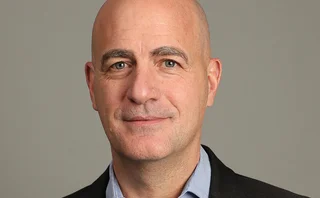
Asia Risk awards 2010: Interest rates derivatives house of the year
Barclays Capital

The interest rate derivatives business during the past 12 months has proven tough for many dealers compared with the first half of 2009. Yield curves in many developed economies have flattened, making yield enhancement via vanilla products a challenge. And simple products are still very much in demand due to concerns about more complex, leveraged structures, which resulted in many investors taking losses when market volatility spiked during the global financial crisis of 2007–08.
The drop in risk appetite for exotic structures combined with tighter regulatory regimes governing structured products sold to private banking clients and some institutions in Asia has put the interest rate structuring capabilities of dealers to the test this year. The flow business desks of investment banks were challenged by the need to come up with simpler structures and still be innovative in terms of product delivery. In the wealth management markets banks often needed to satisfy the apparent requirements from Asian regulators that end-investors should have their principal protection against downside risks.
These pressures caused investors to make part of their decision based on which banks could offer the most attractive funding levels. Meanwhile, the flatness of the US dollar curve combined with concerns about euro trades following the Greek sovereign debt crisis this year also made local currencies more attractive. Real money, sovereign wealth investors, insurers and private individuals sought local currency opportunities in markets such as India, Indonesia, Korea and Thailand – attracted by the steepness of their yield curves and, in some cases, their appreciating currencies compared with the US dollar.
Investors recognised Barclays Capital’s strength in creating attractive structures around these themes as well as the UK bank’s ability to price products at attractive levels that compensate investors from the risks of selling optionality due to Barclays Capital’s internal risk management capabilities. This ability to fund trades at competitive prices enabled the bank to gain a leading market share in even the most commoditised interest rates products, for example, those sold in Taiwan.
The UK bank has also demonstrated some success in branching out to new clientele during the past year. For example, Barclays Capital has increasingly engaged with deep-pocketed family offices and insurance companies, which see it as a top-ranking service provider, citing the dealer’s responsiveness to their needs, attractive funding levels and ability to consistently show new investment ideas on an unsolicited basis and post-sale support.
“We give Barclays more opportunities to give us price quotes on interest rate structures than any other bank; likewise we would engage their views first if we have reverse enquiries that we need to talk to our bank counterparties. Aside from their funding level, their responsiveness has made their rates business stand out,” says a Hong Kong-based chief investment officer at a US insurer.
The executive cites a hybrid solution that helped the insurer manage its Hong Kong liabilities. In the form of Barclays Bank-issued medium term note (MTN), the hybrid was linked to the sovereign credit risk of Malaysia as the underlying credit and topped up with a renminbi overlay in the form of a range accrual to enable his team to express its view on the currency’s likely continual trend of appreciation against other currencies. The MTN return was based on Barclays Capital’s more attractive funding cost than its peers, as well as the spread of the underlying credit, he says. “Barclays’ team was able to quote to us the credit spreads within hours after we approached them. I believe such responsiveness reflects on the bank’s hedging capability because today, as banks are becoming increasingly careful in how they allocate their own capital, very few would give quotes to clients’ inquiries without first going to the market to acquire a hedge,” says the Hong Kong-based executive, adding that his firm has a team of quantitative analysts that dissect the structures that banks try to sell to his company. This team queries service providers on how they hedge the structures, and how they come up with the pricing based on their funding levels.
According to a six-month global structured notes league table compiled by Bloomberg, which includes both interest rate and credit-linked structures, Barclays ranked number two with $5.63 billion worth of transactions completed. It was topped by DZ Bank and followed by Deutsche Bank. Barclays Capital’s market share had advanced with the highest deal count at 488 at the end of June.
For Taiwan, in particular, Amit Agarwal, head of rates structuring for Asia Pacific in Hong Kong, says Barclays Capital was the first participant in the zero callable notes market – one that is highly commoditised but also scrutinised by the Taiwanese regulator to ensure products remain ‘unstructured’ in terms of product classification – to introduce a linear zero structure to tackle the reinvestment risks faced by insurance clients in this popular product.
Agarwal says to keep the product ‘unstructured’, banks could not tie the accreting interest payment to any conditions, therefore this has limited the ability of banks to manoeuvre such components of the structure’s pricing equation. Yet, to compensate for the reinvestment risks of the callable product faced by the investors, Agarwal’s team introduced a linear zero structure in June whereby, instead of giving investors a constant internal rate of return (IRR), which is applied to the outstanding notional in a regular zero callable note, investors would now get a declining IRR over the inception to maturity/call-termination.
“The structure starts with a very high IRR, which keeps dropping, but the amount by which the principal increases is constant and grows by the same amount each year – hence the word ‘linear’ to signify linear increase in principle. The benefit to the investor is that if the structure is called early, the investor gets higher return than regular zero,” says Agarwal.
Comparing the structure with a regular zero callable, Stanley Chiou, head of fixed income at Kuo Hua Life in Taipei, says the 20-year linear zero callable note he bought from Barclays Capital would provide a higher return. By his own internal calculation, it will take a regular zero callable note up to the 17th or 18th years from the day of inception to exceed the return from a linear zero. A zero callable note usually gets called early when rates fall and, from Chiou’s experience, the instrument usually get called on the third or fourth year – meaning that his firm’s targeted yield is often not achieved through a regular zero callable.
“We also like Barclays Capital’s funding level. For the same structure proposed by other banks Barclays’ funding level is more attractive,” says Chiou. “We think the bank’s asset quality is sound, still their funding level is more competitive than comparable double-A rated banks giving you yield enhancement opportunity as we expect their credit spreads to tighten going forward.” For example, he says that around June when he bought the linear zero note, Barclays Capital’s credit spread as indicated by the bank’s five-year credit default swaps spreads was between Libor +150–200 basis points, largely in line with Credit Suisse or DBS, but still offered better yield pick-up than many peers.
Barclays Capital also commands a leading market share among private banking clients, as it claims 32 private banking clients in Singapore that range from international brokerage houses to third-party distributors as clients. Barclays Capital serves private banking clients using a multi-asset class approach with a total of eight asset classes. And one client tells Asia Risk that Barclays Capital’s attractive funding level is another feature that makes the bank’s rates business stand out.
A Singapore-based head of structured products for a European bank’s private banking division says funding level aside, Barclays Capital is able to differentiate from its competitors by its ability to offer solutions to specific problems and offer proprietary trading ideas. The private banker provided one example, which was an index that tracks futures on UK treasury government bonds. “Because private investors’ appetite this year is on vanilla, basic products currently, Barclays’ ability to showcase their exotic structuring didn’t come through this year,” he says. “While this year we gave them a lot of deals in the plain vanilla structures such as cap-floor floaters, range accruals… when appetite returns, our product line might change and we would give them business for more complicated products.”
Agarwal says a lot of banks in the market are still paying a funding level, especially on primary issuance, lower than their credit default swaps spreads in the secondary market as these banks have suffered reduced volumes as they struggle to stay competitive in front of clients. Clients can also lose out because, at times, they have no choice but to accept lower primary levels given that the desired payoff is structured, and hence buying vanilla secondary market notes is not a viable option.
“What differentiates us is the combination of competitive funding and our product capability, such as our ability in idea innovation, ability to deal small sizes and our strength in rates/credit hybrid products. The combination of these factors makes us a favoured counterparty by our clients,” says Agarwal.
Commenting on Barclays’ leading market share in the structured notes area, Agarwal says Barclays Capital has become very efficient at capturing the entire value proposition around funding levels. “What we have achieved is internally getting the recognition for the importance of medium-term notes as a business segment and creating an efficient business model around it. By being more proactive in our focus in this space, such as being consistent in our buy-back levels for structured notes throughout the financial crisis, we are able to create good opportunities and a positive perception about the competitiveness of our products.”
Click here To view the article in PDF format.
Only users who have a paid subscription or are part of a corporate subscription are able to print or copy content.
To access these options, along with all other subscription benefits, please contact info@risk.net or view our subscription options here: http://subscriptions.risk.net/subscribe
You are currently unable to print this content. Please contact info@risk.net to find out more.
You are currently unable to copy this content. Please contact info@risk.net to find out more.
Copyright Infopro Digital Limited. All rights reserved.
You may share this content using our article tools. Printing this content is for the sole use of the Authorised User (named subscriber), as outlined in our terms and conditions - https://www.infopro-insight.com/terms-conditions/insight-subscriptions/
If you would like to purchase additional rights please email info@risk.net
Copyright Infopro Digital Limited. All rights reserved.
You may share this content using our article tools. Copying this content is for the sole use of the Authorised User (named subscriber), as outlined in our terms and conditions - https://www.infopro-insight.com/terms-conditions/insight-subscriptions/
If you would like to purchase additional rights please email info@risk.net
More on Awards
Joining the dots: banks leverage tech advancements for the future of regulatory reporting
The continued evolution of regulatory frameworks is creating mounting challenges for capital markets firms in achieving comprehensive and cost-effectiveawa compliance reporting. Regnology discusses how firms are starting to use a synthesis of emerging…
Markets Technology Awards 2024 winners' review
Vendors spy opportunity in demystifying and democratising – opening up markets and methods to new users
Derivatives house of the year: JP Morgan
Risk Awards 2024: Response to regional banking crisis went far beyond First Republic
Risk Awards 2024: The winners
JP Morgan wins derivatives house, lifetime award for El Karoui, Barclays wins rates
Best product for capital markets: Murex
Asia Risk Awards 2023
Technology vendor of the year: Murex
Asia Risk Awards 2023
Best structured products support system: Murex
Asia Risk Awards 2023
Energy Risk Asia Awards 2023: the winners
Winning firms demonstrate resiliency and robust risk management amid testing times
Most read
- Top 10 operational risks for 2024
- Top 10 op risks: third parties stoke cyber risk
- Japanese megabanks shun internal models as FRTB bites








